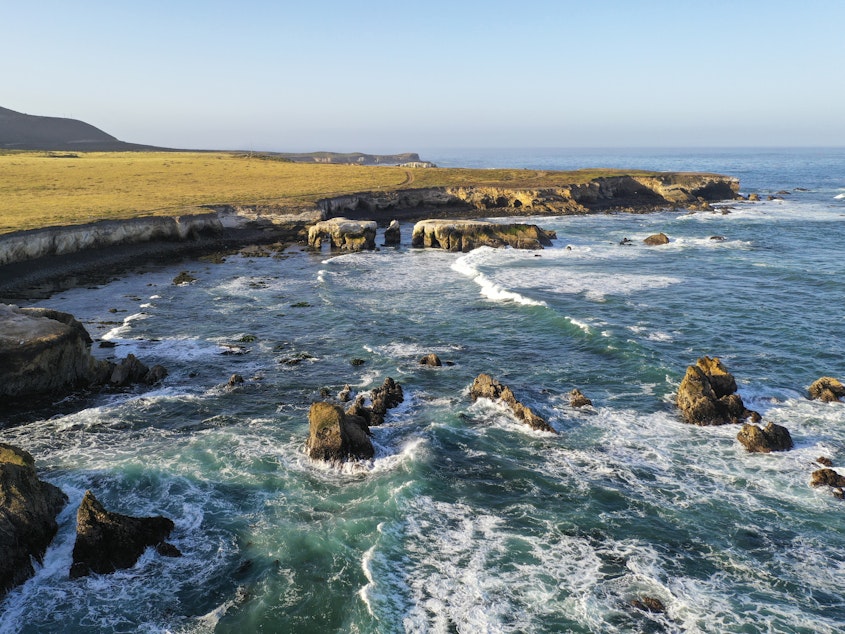Biden proposes vast new marine sanctuary in partnership with California tribe

The Biden administration is one step away from designating the first national marine sanctuary nominated by a tribe. The Chumash Heritage National Marine Sanctuary would protect 5,600 square miles of ocean off the central California coast, an area known for its kelp forests, sea otters and migratory whales. Tribal members of the Chumash, who have lobbied for its creation for more than a decade, would be involved in managing it.
The decision is part of the Biden administration's push to give Native American tribes a say over lands and waters that were forcibly taken from them. Under the proposal, the area would be protected from energy development.
"Sanctuaries uplift local participation in ocean management, and this sanctuary will put Indigenous communities in partnership with NOAA," says Violet Sage Walker, Northern Chumash Tribal Council chairwoman and a nominator of the sanctuary. "The collective knowledge of the Central Coast's First Peoples, as well as other local stakeholders, scientists, and policymakers, will create a strong foundation to have a thriving coast for generations to come."
Walker's father proposed the sanctuary in 2015 and the application sat idle for years. It would be located off a stretch of coastline that's home to many Chumash sacred sites.
"The coastal waters of central California are rich with precious marine life, contain critical ocean ecosystems, and are connected to the past, present, and future of the Chumash people," Vice President Kamala Harris said in a statement about the announcement.
The National Oceanic and Atmospheric Association put the proposal together in consultation with the Chumash. If the sanctuary moves forward, federally-recognized tribes would advise decision-making as part of a collaborative group known as an Intergovernmental Policy Council, modeled after one pioneered with tribes for the Olympic Coast National Marine Sanctuary in Washington state.
Only one band of Chumash, the Santa Santa Ynez Band of Chumash Indians, is federally recognized. Other bands, like many tribes in California, are not. In the mid-1800s, Congress rejected treaties made with some California tribes — a move that was kept secret for decades. Other bands of Chumash would be able to join the sanctuary's advisory council, which also provides feedback for decisions and priorities.
The new boundary of the sanctuary is smaller than the originally proposed 7,600 square miles. It now would exclude an area that is likely to be used for undersea transmission cables from future wind turbines. California's coast has been the focus of new attention in recent years, as the wind industry looks for places to install the state's first offshore wind farms. The state has an ambitious goal to get 100% of its electricity from renewable sources by 2045.
A marine sanctuary designation would prevent wind turbines from being installed within its boundaries, as well as offshore oil platforms. Commercial fishing would be permitted in the sanctuary, as it is in most marine sanctuaries.
NOAA will take public comments until October 23 before a final decision is made in mid-2024.
The country's network of 15 other marine sanctuaries are monitored for their ecological health, which marine experts say helps spot possible impacts and the effects of climate change. Chumash tribal members are already teaming up with scientists to start a monitoring program where the new sanctuary would be designated. [Copyright 2023 NPR]



